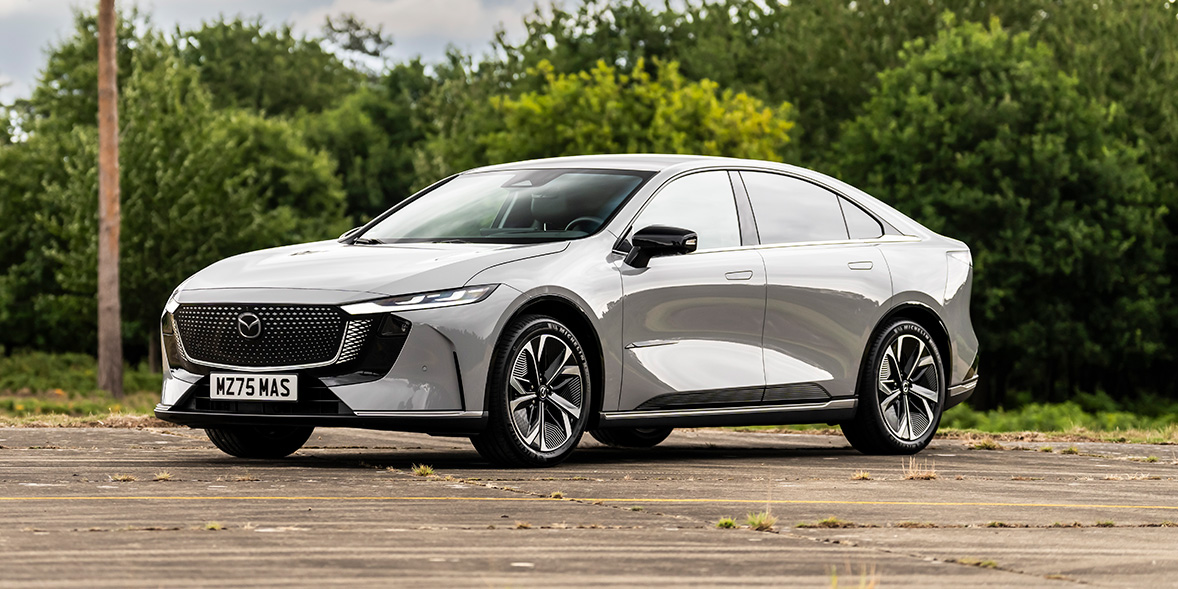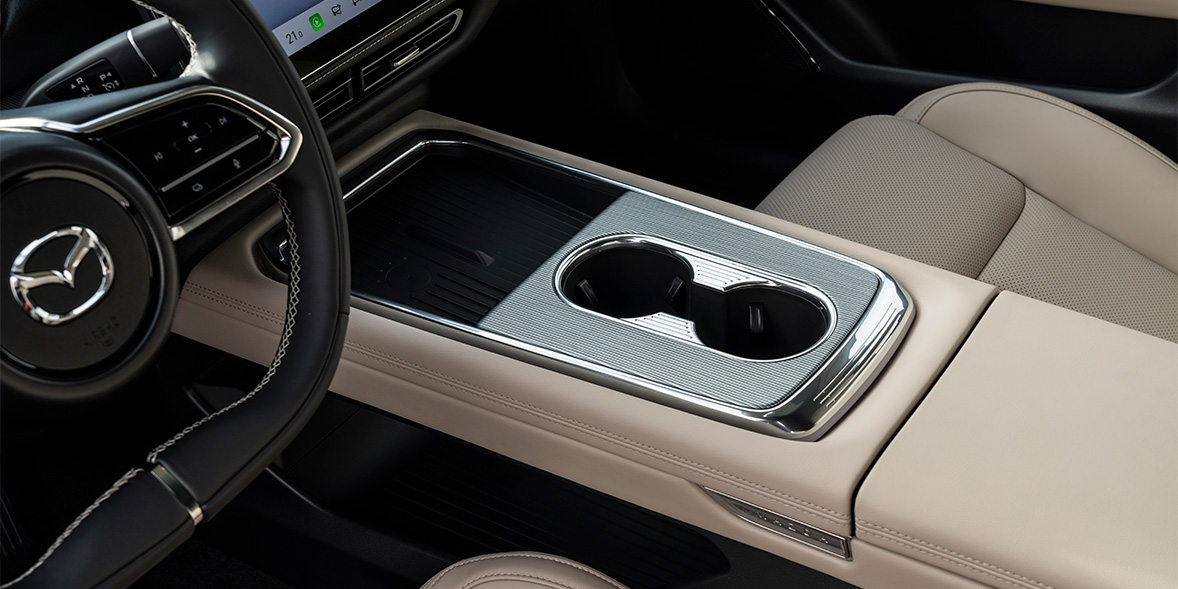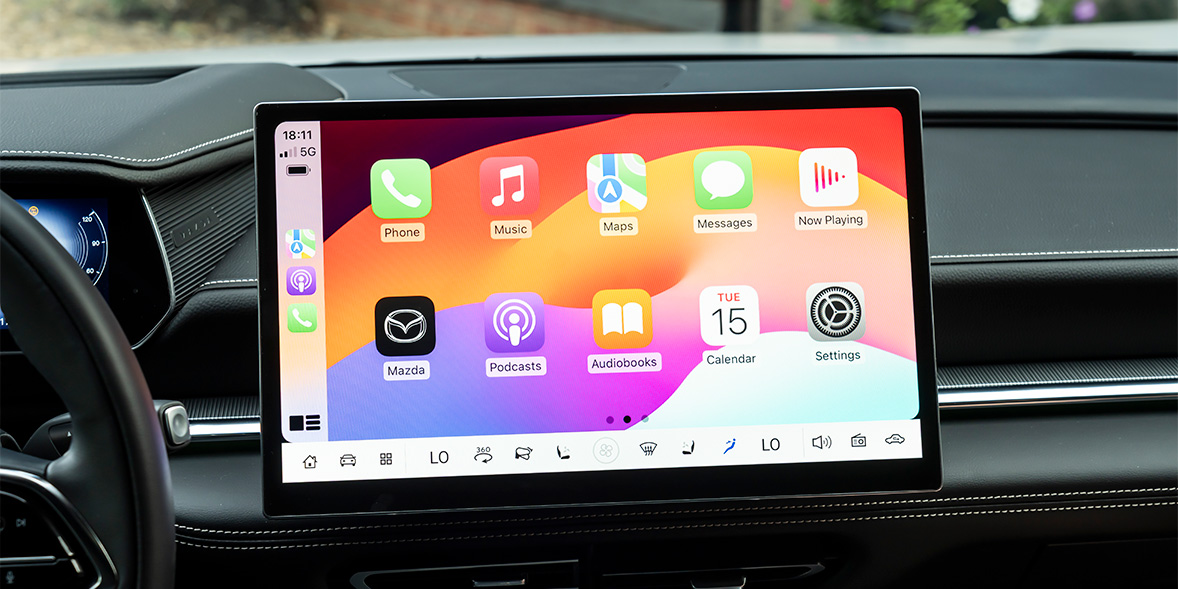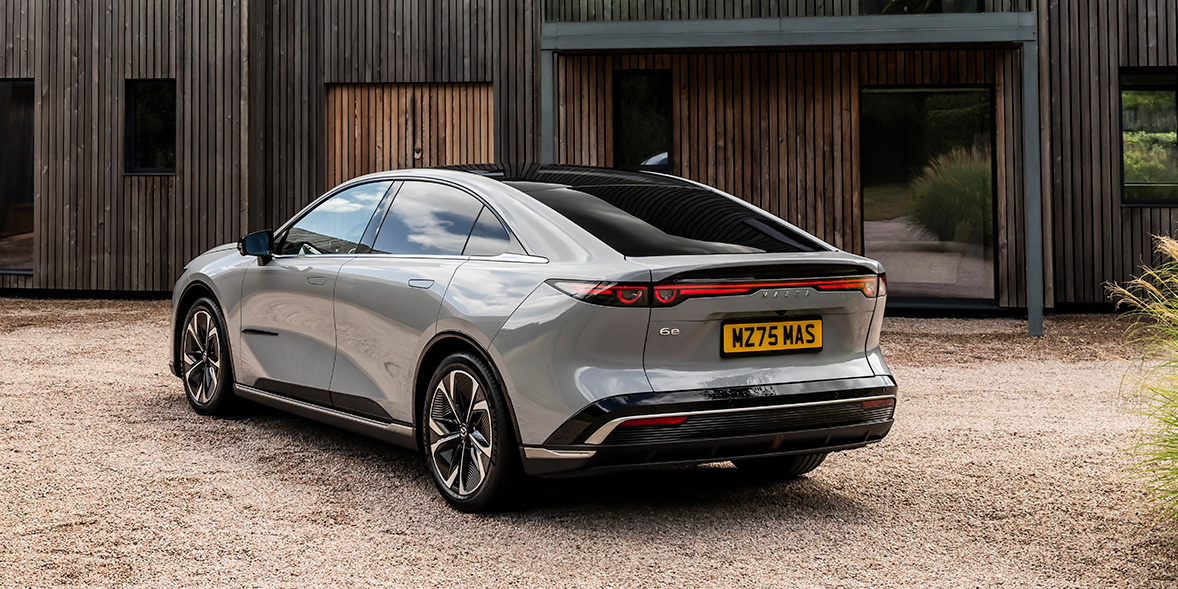5 things I learnt after test-driving the new Mazda 6e electric car

Like most Japanese manufacturers, Mazda hasn't prioritised EVs. Instead, it's chosen to favour mild and plug-in hybrid versions of its existing cars.
After its MX-30 EV was discontinued earlier in 2025, Mazda was left without an EV in its line-up, leaving it at risk of falling foul of the government’s zero emission vehicle mandate.
Enter the 6e: a large electric hatchback that’s an indirect replacement for the Mazda 6 range. It was last sold in the UK in 2023 but remained on sale elsewhere until 2025.
However, the Mazda 6 won't be sold here until 2026, with Mazda saying it needs to make tweaks for the UK market.
As it’s already on sale in mainland Europe, I took a Switzerland-registered 6e on a UK test drive to see if the 6e is worth considering.
See all the EVs eligible for the government grant (and the brands offering their own discounts)
Mazda 6e: key specs
| Mazda 6e Standard Range | Mazda 6e Long Range | |
|---|---|---|
| List price (from) | £41,494 - £43,150* | £43,055 - £44,812* |
| Boot space (litres) | 336 - 1,074 | 336 - 1,074 |
| Battery capacity (kWh) | 68.8 | 80 |
| Consumption (mi/kWh) | 3.74 | 3.77 |
| Minimum charging time (10-80%) | 22 minutes | 47 minutes |
| Maximum charging speed (kW) | 200 | 90 |
| Power (hp) | 258 | 244 |
| Range (miles) | 300 | 345 |
| Braked towing capacity (kg) | 1,500 | 1,500 |
*based on prices in Switzerland, actual UK prices TBC
1. It's pleasant to drive
The Long Range 6e I drove accelerates quickly at most speeds, although I did find it less quick when accelerating on the motorway. The motor is refined and wind noise is limited. But road noise is prominent and the interior isn’t that quiet, especially when you drive on poorly surfaced roads. I thought it was generally comfortable, and the car’s body was only unsettled by the biggest holes.
It’s not the most engaging car to drive, and there’s lots of body roll when cornering. It’s also not always easy to place the car on the road as the design of the cabin makes it feel very wide. The steering is fairly precise, although this – and the amount of resistance it provides – can be increased by engaging Sport mode or by adjusting the car’s settings in Individual mode.
The brakes feel good. However, I didn't like having to adjust the intensity of the car’s regenerative braking through the central touchscreen, which takes longer than using paddles behind the steering wheel (as on most other cars).

While it’s easy to see out of the front of the 6e, I found rear visibility was poor because of wide rear roof pillars, non-retractable rear seat headrests and the sharply angled rear windscreen.
2. The interior won’t suit everyone
The Takumi Plus version I drove has an extremely attractive interior, which features tan imitation-suede trim and nappa leather seats. It’s certainly among the most distinctive interiors of any similarly priced EV I know of.
The headlining is also very soft. However, while the top of the dashboard is made of soft plastic, hard plastic dominates the lower reaches of the cabin.
The car may be generally well made, but I did notice some issues. The front passenger seat would occasionally rattle when nobody was sitting in it, while the centre console moved slightly when I applied pressure to it. It’s also quite wide, which reduces the feeling of space inside. The blinds for the glass roof were also made of thin and quite flimsy fabric.

At least the cabin is easy to get in and out, although the sills are quite wide. The 6e also has electric pop-out door handles, which won’t suit everyone as they can be hard to grip.
Even tall people like me (I’m 6ft 2in) can sit comfortably in the front of the car, although there’s more leg space than head space. Rear space is more limited, and someone of my height sat behind me would only just fit in the outer seats because of the limited legroom and the fact that the headrests don’t extend far enough. Even though the floor in the rear of the car is flat, the centre rear seat isn’t very spacious and is unsuitable for tall people.
The driver’s seat has 10-way adjustment, a tilting base and two-way lumbar support. But because the leg base can’t be extended, it’s too short for me, which makes it slightly uncomfortable. The passenger seat can only be adjusted for position and backrest angle, which reduces comfort further. The fixed headrests of these seats are comfortable, though.
Like many EVs, the 6e’s rear seats are positioned quite high up, which can make them uncomfortable to sit in because of the sharp knee angle passengers are forced to adopt. You can’t recline the rear seats either.
As the 6e is a hatchback with a ‘liftback’ style boot (where the rear windscreen also lifts up with the boot lid), it’s very easy to load luggage into the car, not least because of the flat boot floor. However, the rear seats don’t fold flat, while there’s a small gap between the rear of the car and the boot floor to contend with.

See all our lab-tested reviews of new and used Mazda cars
3. You need to use the touchscreen a lot
Unlike most brands, Mazda seemed to be bucking the trend of opting for touch-sensitive controls over physical ones, even on recent models. It’s therefore surprising that nearly all of the 6e’s controls are located within the 14.6-inch central touchscreen – even simple things, such as the wiper speed and headlight settings, have to be set through it.
The reason for this shift is because the 6e was developed with assistance from the Chinese manufacturer Changan, whose Deepal S07 model I’ve also driven in the UK. And there are definitely similarities between the two. The direction selector and indicator stalks look almost identical to those found in the S07. The menus on the screen are also structured in a very similar (and confusing) way. Even the energy consumption unit as displayed on the touchscreen is the same as the S07’s.
The graphics also use a mix of Changan and Mazda fonts and symbols, which I found both confusing and unattractive. However, the touchscreen was actually quite easy to use as there’s a fixed area at the bottom of the screen for important controls.

The steering wheel has some touch-pad controls on it (such as for the driving mode and media controls), which is useful. However, the small instrument cluster is hard to read as some of the information is displayed in very small fonts.
4. The driver assistance tech could be better
Much of the car’s driver assistance tech worked well during my road test, despite the car being left-hand drive and not fully set up for UK roads. The intelligent speed assist system was reliable, while the distraction-detection was more subtle than systems in other cars I’ve driven.
However, because so much is controlled through the touchscreen (including important functions), I had to look at it frequently. The distraction monitor came on a lot as a result. Had Mazda used physical controls, which are easier to use without looking at them, this wouldn't have been a problem.
My least favourite piece of safety tech was the lane-keep assist system. While it’s not particularly intrusive in general driving, when it did choose to intervene, it was surprisingly harsh and pulled the car quite firmly back into lane.
‘Dangerous’, ‘annoying’ and ‘absolutely hopeless’: what you’ve told us about driver assistance tech
5. The Long Range model is odd
You might expect that both versions of the 6e would be very similar. However, the batteries are actually made of different materials.
Standard Range cars have a phosphate lithium-iron (LFP) battery, while Long Range cars have a nickel-manganese cobalt (NMC) battery. This might explain why Long Range cars have a significantly longer rapid charging time and lower speed compared to Standard Range cars, as NMC batteries are more vulnerable to degradation than LFP batteries.
Even though the Long Range model takes more time to charge at rapid DC chargers, AC and home charging times are broadly similar.
The Short Range model would be more convenient for long-distance drivers because it charges quicker. If you're prepared to wait a bit longer, the Long Range model rewards you with much higher range, to the extent that the extra range would more than offset the Standard Range model’s faster charging speed – even if you drove at 70mph for the entire time.
Is an electric car right for you? Our expert guide takes you through the basics
Mazda 6e: Final thoughts

We’ll reserve our final opinion on the 6e when we lab test the Standard Range model, but my experience of the Long Range model left me slightly underwhelmed.
It may have an upmarket interior (in Takumi Plus trim) and have a spacious front cabin, but the driving experience isn’t as good as in other large cars. The lack of physical interior controls would be a huge shock if you’ve switched from another Mazda – and is a significant negative in my opinion.
While UK prices haven’t been confirmed yet, Swiss prices would suggest the 6e is competitively priced compared with other large electric hatchbacks such as the Kia EV6 and BMW i4.
Just be aware that there are plenty of nearly new examples of these cars on the market, which are cheaper than the 6e. And while the 6e’s six-year warranty is better than most rivals, the MG IM 5 has a seven-year warranty.
See the very best electric cars based on our independent lab tests
